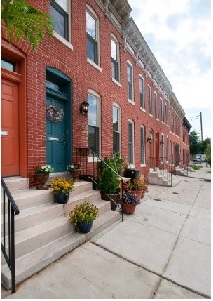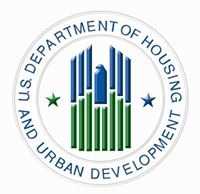WASHINGTON –- (RealEstateRama) — For years, dozens of historic rowhouses in an East Baltimore neighborhood sat vacant, boarded up and crumbling from neglect while nearby families were in need of affordable housing. Then, a $9.3 million redevelopment project rehabilitated 32 vacant rowhouses into beautiful affordable housing homes complete with a coffee shop and a workforce development center inside two mixed-use buildings.
Today, the U.S. Department of Housing and Urban Development (HUD) and the Advisory Council on Historic Preservation announced that the project, the East Baltimore Historic II, is the winner of the prestigious 2017 ACHP/HUD Secretary’s Award for Excellence in Historic Preservation.

The award recognizes the project’s success in advancing the goals of historic preservation, while providing affordable housing and expanded economic opportunities for low-and moderate-income families and residents. The result is two blocks of rehabilitated homes that still retain the character of the city’s historic district.
“This is a great example of the power that comes from a public-private collaboration, not just to rehab a few homes, but an entire neighborhood,” said HUD Secretary Ben Carson. “This project serves as a model of how to rebuild our aging infrastructure in cities, and I’m proud to partner with the Advisory Council on Historic Preservation to recognize the East Baltimore Historic II project. It’s not only honoring the historic character of Charm City, but also offering new economic opportunities to families.”
“East Baltimore Historic II exemplifies the ACHP’s recommendations for best practices in community revitalization,” said ACHP Chairman Milford Wayne Donaldson. “With this project, historic tax credits were used to promote the principles of smart growth and sustainability, while at the same time preserving local historic assets.”
TRF Development Partners’ renovation of the East Baltimore Historic II community combines historic preservation, community development, and affordable housing within a stressed and disinvested housing market. From late 2014 through early 2016, the TRF fully rehabilitated the 32 vacant rowhouses and two mixed-use buildings on two city blocks. The housing units are income restricted and affordable to people earning 50 to 80 percent of the Area Median Income. The project was also designed to meet the Secretary of the Interior’s Standards for Treatment of Historic Propertiesand transformed an entire neighborhood block, spurring additional rehabilitation activity nearby.
The project emerged from a larger redevelopment plan for East Baltimore between TRF and BUILD, a community partner that includes more than 20,000 residents. Their joint plan came after two planning processes, begun in 2004, in partnership with the city of Baltimore. The plan called for homeownership and rental redevelopment production to achieve the quickest possible sustainable re-occupancy of long-vacant units in the Broadway East and Oliver neighborhoods of Baltimore, with minimum use of public subsidy.
HUD funding allowed TRF to provide the neighborhood and its residents with a neighborhood coffee shop. CUPs Coffeehouse and Café is a nonprofit coffee shop that provides a workforce development program for at-risk teens and young adults. The availability of HUD grant funds allowed the retail space to achieve a basic commercial buildout without carrying any permanent debt, allowing TRF to offer the space at a low rent to support the nonprofit business. HUD funding therefore enabled the creation of two services offered for the community at the coffee shop: a workforce development program and a retail business serving breakfast and lunch six days a week.
The East Baltimore Historic II project was also developed so as to make use of the Federal Historic Tax Credit, and therefore the design and scope of work for all properties were submitted to the State Historic Preservation Office and National Park Service for review. Each rehabilitation was thoroughly documented prior to the work, and each house retained the historic footprint and existing fenestration patterns; retained or carefully replicated existing historic features; and, where appropriate, alterations were approved. The result is that the two blocks of renovated homes still retain the character of the historic district.
###
HUD’s mission is to create strong, sustainable, inclusive communities and quality affordable homes for all.
More information about HUD and its programs is available on the Internet
at www.hud.gov and http://espanol.hud.gov.
You can also connect with HUD on social media and follow Secretary Carson on Twitter and Facebook or sign up for news alerts on HUD’s Email List.
(202) 708-0685
http://www.hud.gov/news/index.cfm








